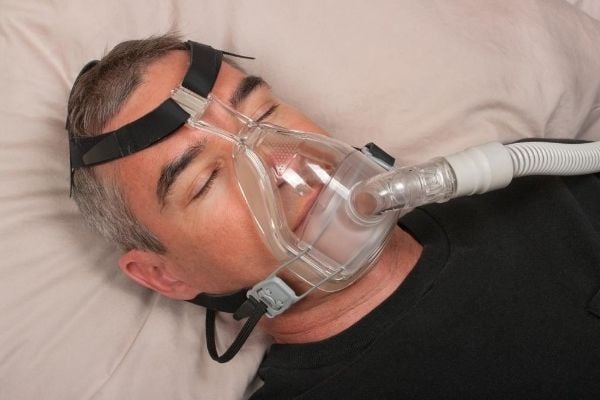What if you stopped breathing for a total of 10 minutes every hour? This may be happening if you have sleep apnea, a common sleep disorder, in which your breathing stops or becomes extremely shallow temporarily. These pauses can last 10 to 20 seconds and can occur more than 30 times per hour! In its most common form, obstructive sleep apnea (OSA) is caused by an airway that is narrowed or blocked.

Many people living with sleep apnea find that decongestants don’t provide lasting relief and using continuous positive airway pressure (CPAP) therapy, or bilevel positive airway pressure (BiPAP) therapy is cumbersome and frustrating. Fortunately for the millions of people who live with this condition, minimally invasive sleep apnea surgery is an option. The specialists at C/V ENT Surgical Group utilize the latest procedural techniques available nationwide to offer sleep apnea patients lasting relief.
Minimally-Invasive Treatment of OSA
In the past, the most common form of surgery for sleep apnea was very invasive, but now there are different kinds of minimally invasive surgery that can help address the causes of sleep apnea. We work closely with each patient to obtain a thorough medical history and complete a comprehensive examination to determine the best treatment option.
Laser-Assisted Uvuloplasty (LAUP)
Who it’s for: This procedure is for habitual snorers who have mild to moderate OSA. Candidates for this procedure may be those whose apnea is caused by a soft palate issue. Of the OSA procedures that stiffen the palate, this procedure generally offers the most lasting outcomes. The specialists at C/V ENT Surgical Group are experts at identifying who the right candidates are for this revolutionary surgery.
What it is: This breakthrough, minimally-invasive procedure involves a laser trimming the uvula and soft palate to help reduce the vibration and collapse in the back of the throat that causes snoring and the ability of the soft palate to obstruct the airway.
What to expect: The procedure is done in-office with local anesthesia in about ½ an hour. Recovery is fast—you can usually return to normal activities, including eating and drinking, the same day. Most patients do experience a sore throat for 7-10 days. The surgeons at C/V ENT Surgical Group have high success rates with this procedure, helping hundreds of people find relief from snoring and sleep apnea.
Coblation
Who it’s for: The surgeons at C/V ENT are specialists in coblation as a sleep apnea treatment. This surgery is for those with sleep apnea and the technique can be used in different areas of the nose or throat.
What it is: The procedure uses radiofrequency ablation to remove excess soft tissue that is leading to obstruction
What to expect: This is another minimally-invasive approach to sleep apnea treatment that is performed in the office under local anesthesia, typically taking about half an hour.
Tonsillectomy and Adenoidectomy with or without UP3
Who it’s for: Usually, these procedures are best for those who have been diagnosed with OSA or severe snoring that is caused by enlarged adenoids and tonsils as well as significant palatal redundancy.
What it is: A tonsillectomy is the surgical removal of the tonsils and adenoidectomy is the surgical removal of the adenoids. A UP3 is the surgical recontouring of the soft palate to increase space and decrease collapse in the back of the throat.
What to expect: This is a more invasive surgery done in an outpatient surgical center for patients with moderate to severe OSA with enlarged tonsils, adenoids, or redundant and floppy palatal tissue. We routinely perform these procedures for young people who live with sleep disorders, with high reported success rates.
Septoplasty and Turbinate Reduction
Who it’s for: Septoplasty may be the right procedure for those whose sleep apnea is caused by a deviated septum (the dividing wall between the two nasal passages).
What it is: A tiny, very precise incision is made inside the nose so that the surgeon can remove or straighten the parts of cartilage and bone that are deviated (crooked). Learn more about septoplasty for snoring. Minimally invasive turbinate surgery enlarges nasal airways, further improving breathing and providing relief for OSA.
What to expect: Sometimes a septoplasty and turbinate surgery are combined to provide relief for OSA. C/V ENT Surgical Group performs septoplasties at a state-of-the-art surgical center, but standalone turbinate surgeries can often be performed in-office. Septoplasty can take from half an hour to an hour, and you’ll be ready to go home within a few hours after surgery. Most people experience mild pain or discomfort for up to a week and can return to work and many regular activities within a few days to a week. Most people have no pain from in-office turbinate surgery and feel fully recovered within a few days.
Turn to the Sleep Apnea Experts for Lasting Relief
The surgeons at C/V ENT Surgical Group are highly renowned in minimally invasive sleep apnea surgery and have helped thousands of patients in the greater Los Angeles area find relief from OSA.
Contact us to learn more about your sleep apnea treatment options.

